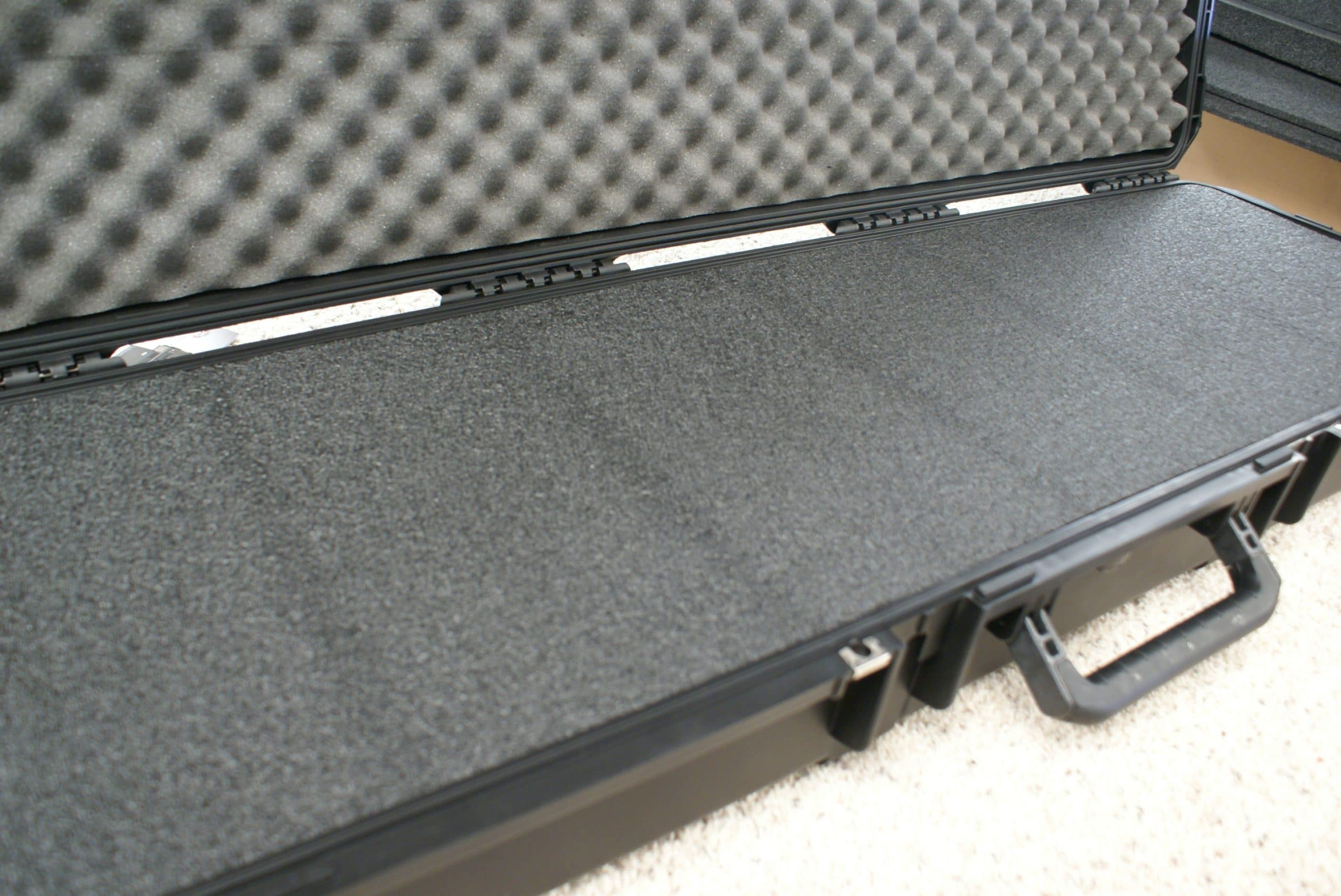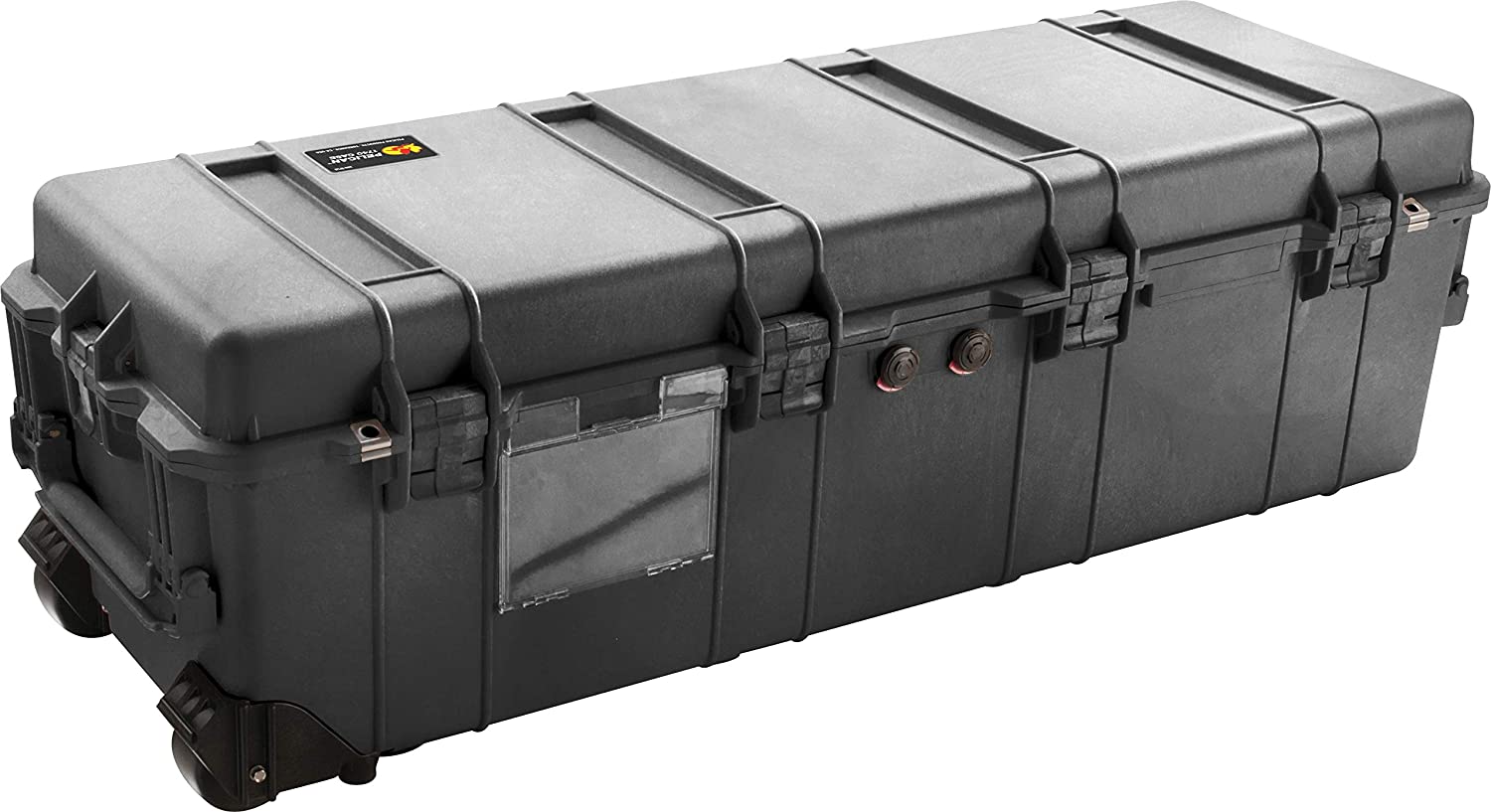There are many different kinds of foam that you can use for your gun case. In general, however, there are three main types of foam for gun cases to choose from.
Table Of Contents
PU – Polyurethane Foam
First, is polyurethane, or PU. Polyurethane is quite possibly the most common type of foam used in gun cases. It is considered an “open-cell” foam and typically has a density between 1.3 and 1.5 pounds.
Polyurethane also has great shock absorption qualities, so if your case is dropped, this foam will protect the contents of your case. This type of foam is best used for the everyday protection of your weapons or other sensitive equipment.
PE – Polyethylene Foam
The second main type of foam is polyethylene or PE. Polyethylene is a closed-cell foam that is much more rigid than polyurethane foam. Because of this quality, it is slightly more expensive and does not offer as much give as polyurethane as well. This makes it better for long-term storage of weapons as opposed to everyday use.
Other great qualities of polyethylene foam are that it does not absorb moisture and it does not stain. It also has a longer shelf-life than softer foams, so it does not need to be replaced very often. In addition to long-term storage, this type of foam is great for heavier weapons and objects that would weigh down a lighter foam.
EVA – Ethylene-vinyl Acetate Foam
The third, and last, the main type of foam is ethylene-vinyl acetate, or EVA, foam. EVA foam is a closed-cell foam, but is very rigid and has a smooth finish. It is much more expensive than the other two types of foam. Because of these qualities, it is most commonly used in display cases or showcases to provide a clean and finished look. EVA foam is not recommended for the everyday protection of your weapons.
How to Choose the Right Foam
To choose the right foam, you must first think about what you need the foam for specifically. Are you storing your gun for long periods of time in this foam? Are you using it to display your gun? Do you plan to use your foam to protect your weapon for everyday use?
Once you are able to answer these questions, then you will know what type of foam you should be using. If you need everyday protection for your gun, then you will want to purchase polyurethane foam. For nice-looking display purposes, EVA foam is the way to go. And for storing your weapon for long periods of time, polyethylene foam is the answer.
How to Cut Foam For Your Gun Case
Once you choose the type of foam that you want, it is time to custom cut the foam to fit the gun or guns that it will be enveloping. Now, you can easily cut the foam yourself, but you can also get your foam professionally cut with a CNC machine. The easiest, and most cost-effective way, is to use a sharp knife or blade to cut the foam yourself.
To cut your foam yourself, first, lay your items out where you want them on top of the foam. Make sure to leave at least one inch of space in-between items and the walls of the case. Once you have chosen your layout, use a pen or chalk to outline the items carefully. After your outline is complete, remove your items and begin cutting.
Use a sharp knife or blade, and always keep your blade at a 90-degree angle to the foam. It is also important to try to take long strokes with your blade instead of short, sawing cuts. This technique will make the smoothest cuts with the least number of ridges left behind.
Cases with Pre-Cut Foam
If you are not interested in purchasing and cutting your own foam, you can purchase gun cases with pre-cut foam inside. Some cases, like the Pelican 1740 Gun Case, come with foam that is cut to fit different types of weapons.
While this case is not specifically custom to your weapon or weapons, it does offer multiple different types of foam inserts to accommodate different guns. This specific foam insert offers multiple layers of foam to hold accessories, ammunition, optics, and more.
Other cases come pre-filled with high-quality foam that is not pre-cut to fit a specific gun.
This is a nice option for a few reasons. First, the foam that comes included in the case, like the Pelican Long Gun Case, is already fitted perfectly to the size and shape of the case.
This saves you the step of fitting your foam into your case properly. Second, it gives you the option of customizing your case to fit the gun and accessories that you want. This is a great middle-of-the-road option for choosing the best gun case and foam.
Foam for Gun Cases – Conclusion
In the end, the best option for gun case foam is not a “one-size-fits-all” choice. Different people have different needs from their foam, as well as different preferences. If at all possible, go to a brick-and-mortar store that has all of the three main types of foam available for you to touch.
Feeling the foam before making your decision is a great way to help you make up your mind. If this is not an option, make sure to read online reviews before making your purchase













